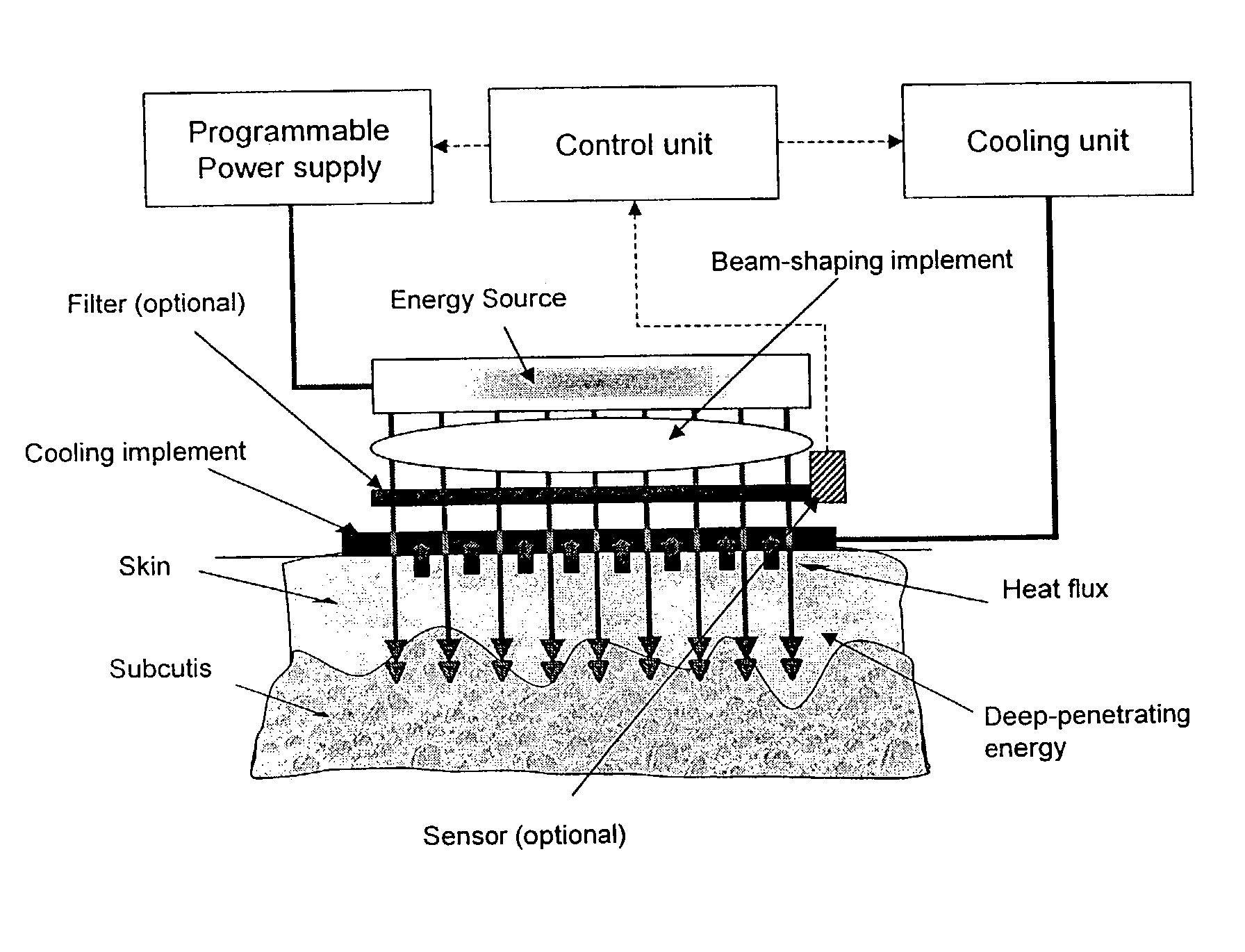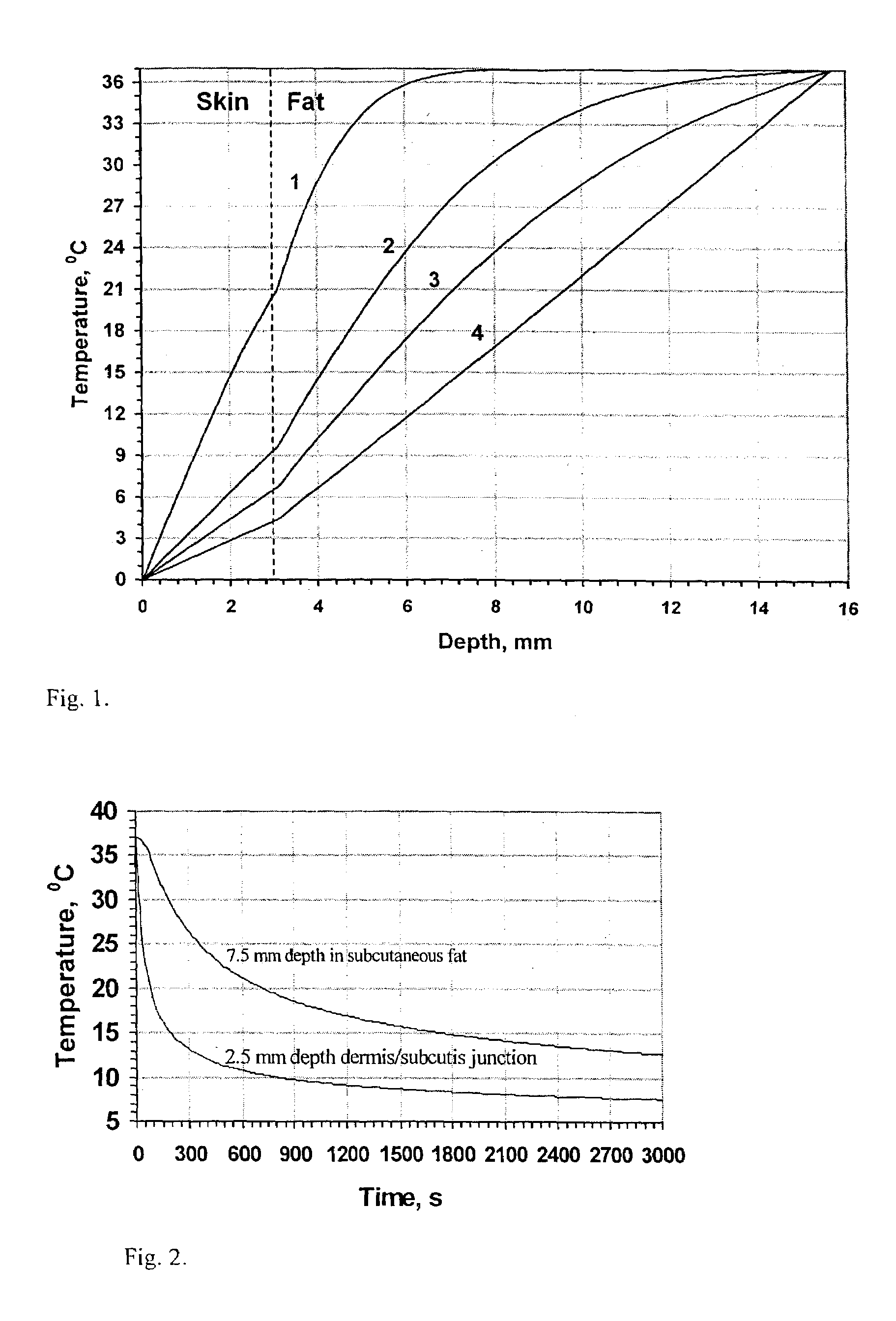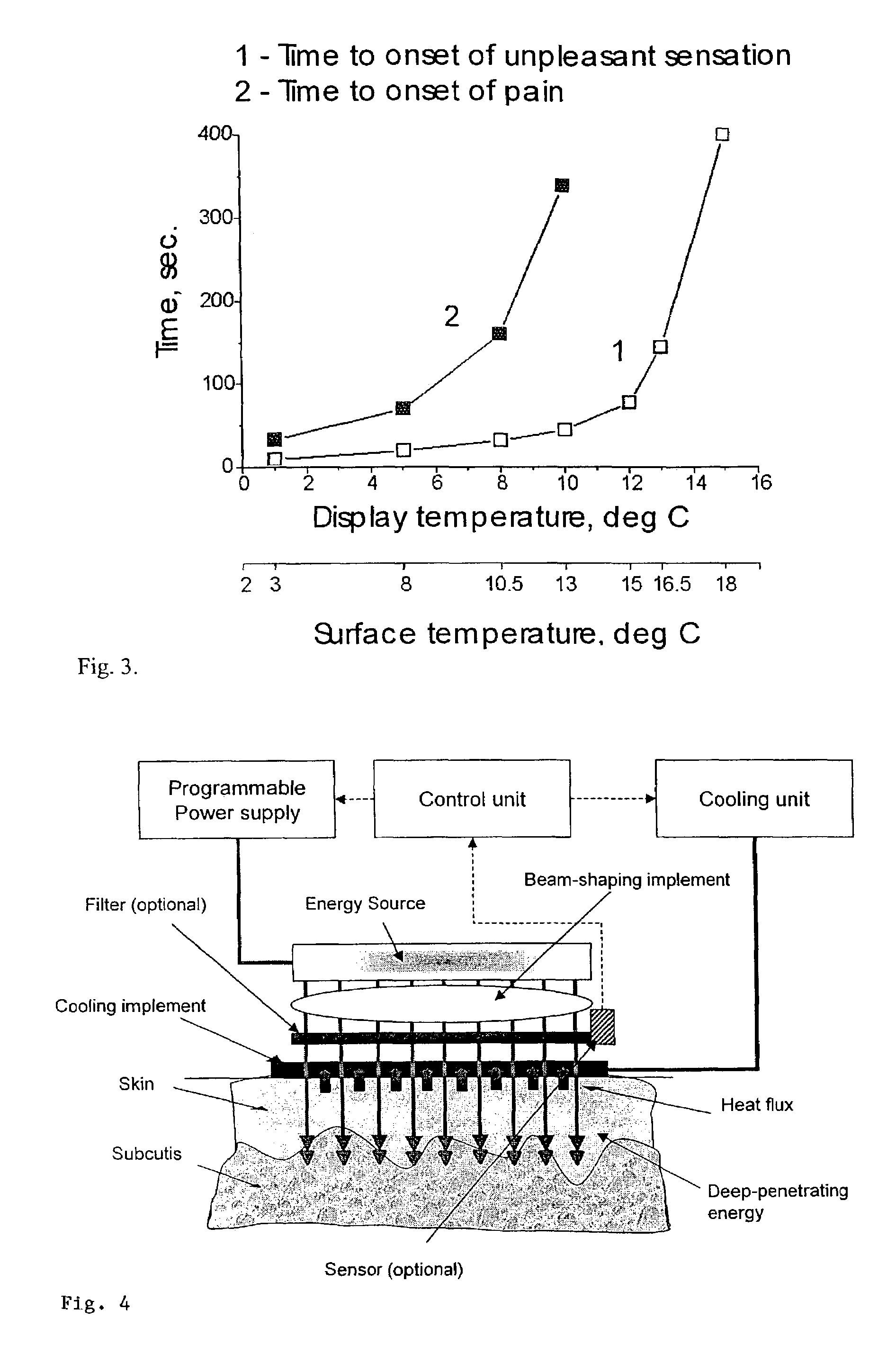Method and apparatus for treatment of cutaneous and subcutaneous conditions
a technology for applied in the field of methods and apparatus for treating cutaneous and subcutaneous conditions, can solve the problems of inability to achieve large-area treatment, inability to achieve large-scale treatment, and damage to the surface layers of tissue, etc., and achieve the effect of sufficient power and duration
- Summary
- Abstract
- Description
- Claims
- Application Information
AI Technical Summary
Benefits of technology
Problems solved by technology
Method used
Image
Examples
Embodiment Construction
[0027]Applications in which the invention may be useful include the treatment of various pathological and cosmetic conditions, particularly skin rejuvenation, wrinkle removal, skin tightening and lifting, reduction of odor production, hair growth control, acne treatment, cellulite and subcutaneous fat treatment, physical therapy, muscle and skeletal treatments, including treatment of spinal cord problems, and treatment of cumulative trauma disorders (CTD's) such as carpel tunnel syndrome (CTS), tendonitis and bursitis, fibromyalgia, lymphedema and cancer therapy.
[0028]The application of thermal energy, either heating or cooling, to tissue may also be used, for example, in physical therapy treatments, such as to enhance or accelerate wound healing or relieve pain. Beneficial effects may include a decrease in joint stiffness, an increase in joint extensibility of collagenous structures such as tendons and scar tissue, pain relief, blood-flow changes, or a decrease in muscle spasm and ...
PUM
 Login to View More
Login to View More Abstract
Description
Claims
Application Information
 Login to View More
Login to View More - R&D
- Intellectual Property
- Life Sciences
- Materials
- Tech Scout
- Unparalleled Data Quality
- Higher Quality Content
- 60% Fewer Hallucinations
Browse by: Latest US Patents, China's latest patents, Technical Efficacy Thesaurus, Application Domain, Technology Topic, Popular Technical Reports.
© 2025 PatSnap. All rights reserved.Legal|Privacy policy|Modern Slavery Act Transparency Statement|Sitemap|About US| Contact US: help@patsnap.com



